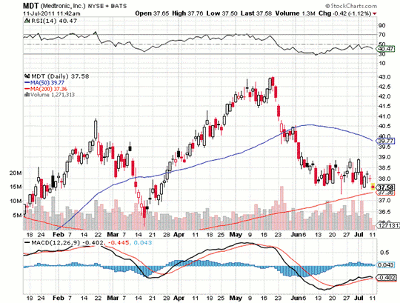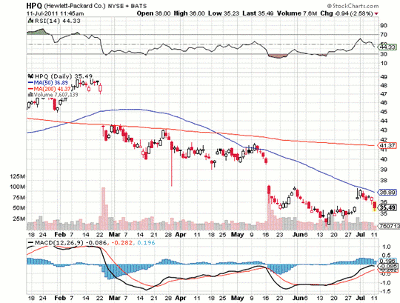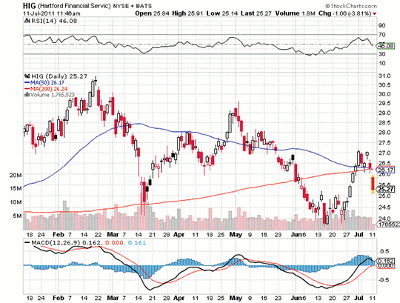Shares of these three companies have stunningly low P/E ratios, meaning even the smallest catalyst, like good news or higher-than-expected profit growth, could spark a very sharp rally or even a double.
In its latest issue, Money magazine cited data showing that stocks with the lowest earnings multiples tend to post the highest returns. A chart in the article detailed that the l0% of stocks with the lowest price-to-earnings (P/E) ratios returned almost 17% annually since 1963.
In stark contrast, the 10% of stocks with the highest P/Es returned only about 7% and qualified as the worst-performing group.
This wide return disparity makes clear sense to value investors. This is because stocks with low P/E ratios have equally low expectations built into the shares. In other words, it doesn’t take very much good news to push them substantially higher. The opposite is true of high-P/E stocks; they eventually run out of steam and disappoint investors by posting weak returns.
The article also provided a quote from Joel Greenblatt, a well-known value investor, who stated “A low P/E is like a big ‘X’ on the map telling you where to start looking” for appealing investment opportunities.
With that, I’ve found three companies for MoneyShow.com readers with very low P/Es that can rally sharply on just a hint of strong sales or profit growth.
Medtronic (MDT); Business: Medical devices; P/E: 11.1
Medtronic (MDT) is the largest pure-play medical device firm in the world. It sells devices to help patients fix abnormal heartbeats, pump blood properly, and recover from spinal and other injuries. Because it operates in the health care industry, Medtronic is relatively recession-resistant. As a result, sales are stable and hardly missed a beat during the credit crisis.
Medtronic’s business has been steadily growing for more than a decade. During the past ten years, both sales and earnings have grown about 12% each year. Back in 2001, Medtronic’s average P/E was greater than 50—a ridiculously high level.
That valuation has fallen steadily since and is now at the other extreme, with a P/E just above 11. I attribute this partially to overblown fears that new government regulations will depress health care industry profits.
New product releases should keep total growth in the double digits going forward. Additionally, the P/E should eventually expand to better reflect Medtronic’s growth potential and industry leadership position.
A P/E closer to 15 is reasonable and on its own could mean close to 40% gains from current levels. Adding in profit growth could mean share price gains closer to 50% within a couple of years and double that of current levels within five to six years.
NEXT: Computer Giant with an Ultra-Low P/E Ratio
|pagebreak|Hewlett-Packard (HPQ); Business: Computers, servers, software, IT, etc.; P/E: 7
Hewlett-Packard’s (HPQ) recent struggles have been widely publicized and include the sacking of CEO Mark Hurd in August 2010 on what appeared to be lapses in personal judgment as well as weak results in the personal computer division and consumer product sales.
These difficulties have pushed the stock’s P/E to its lowest level in more than 20 years. Back in 1991, the P/E averaged close to 16, which is more than double current levels.
HP recently appointed a new CEO, Leo Apotheker, who announced ambitions plans to report earnings of $7 per share by 2014. Cloud computing remains a key growth avenue, as does a further push into software and services, both of which boast high profit margins.
Analysts currently project earnings of $5 per share for 2011, which translates to an additional 40% earnings growth needed to get to the 2014 goals. If HP hits these goals, then the stock price should follow.
I estimate the stock can double in a few years, and do so quite easily. The stock would only need to carry a P/E of 10 off of the projected earnings levels in a little more than three years.
NEXT: Unloved Insurer on Brink of a Big Comeback
|pagebreak|Hartford Financial Services (HIG); Business: Insurance; P/E: 6.3
Hartford Financial Services Group Inc. (HIG) was hit hard by the financial crisis but is now on a recovery path. Its primary focus is providing insurance and retirement services for small businesses and individuals.
A strategy of rapidly expanding into international markets and annuity sales became two of the worst businesses to be in when global financial markets seized up, but the company has since refocused. Hartford is returning to its insurance roots, providing property and casualty insurance for more than one million business customers and 18 million individuals.
The market has not yet given Hartford credit for its more conservative philosophy. Currently, the stock trades for only 6.3 times the $3.92 in earnings analysts project for this year. And by 2012, management has a goal of posting returns on equity of 12%, which works out to more than $5 per share in earnings. I think it’s reasonable to project a P/E of 10 within a couple of years and a stock price near $50 per share.
Another key metric in the insurance industry is price-to-book (P/B) value. A P/B ratio of 1 is seen as a good buying level because it means the stock is valued for the exact amount of assets on the company’s balance sheet. Anything below 1 could be a compelling buy.
During the first quarter, Hartford’s book value was about $47.15 per share. Based on recent share prices, Hartford shares trade for almost half of book value, providing another indication the stock could double as investors get more comfortable with the company’s recovery.
Action to Take
Right now, the health care, technology, and financial services industries are great places to find stocks trading at low P/E ratios. My analysis suggests Medtronic, HP, and Hartford are among the best individual names in each of these industries due to their business prospects and in light of the evidence that stocks with the lowest earnings multiples post the highest returns over time.
Overall, these stocks have the potential to double within a few years.
By Ryan Fuhrmann of RationalAnalyst.com
























